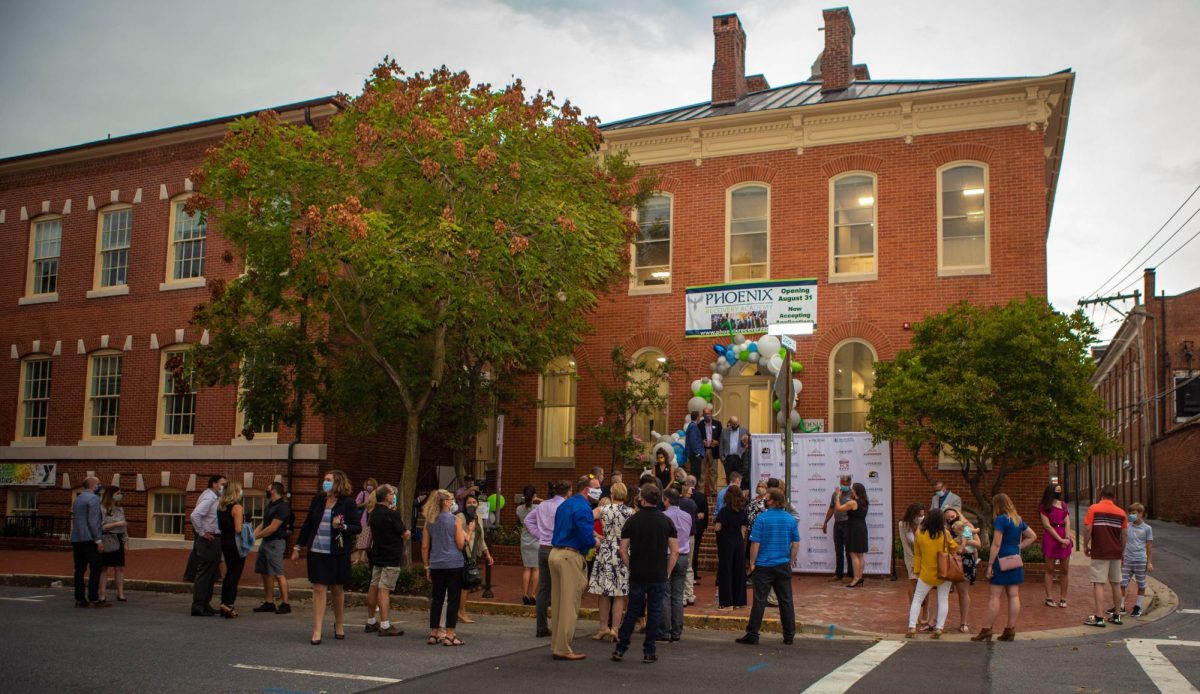New Kenwood Park sidewalk project stirs up controversy
Some residents are worried about developers chopping down mature trees, while others want to feel safe when walking in their neighborhood — even if it means the removal of local trees.
May 27, 2023
The roar of an engine erupts as a car rolls down Lenox Road. A mother holding the tiny hand of her young child jolts with shock at the sudden, loud noise. She frantically searches for a sidewalk, seeking safety for herself and her family, but her eyes meet the yellow-tinted grass of a neighbor’s lawn. The car slows down, and she exhales in relief, gripping a street-side tree trunk with one hand and her child’s waist with the other. She looks down at her child’s wide eyes and then back at the street to see if it’s safe to resume her walk.
Situations like these are a constant reality for Kenwood residents, whose neighborhood lacks adequate sidewalks. The Centers for Disease Control and Prevention (CDC) report that roadside accidents kill 1.35 million people a year, and a report by the Rainforest Action Network states that 3.5 to 7.5 billion trees are cut down annually. These two pressing issues collide with each other when discussing the topic of sidewalk safety.
On April 22, 2020, the Montgomery County Department of Transportation (MCDOT) held its first virtual public meeting focused on sidewalk installation in Montgomery County. Members of the MOCO community voiced their opinions on the implementation of proper walkways in Montgomery County neighborhoods, providing a myriad of arguments for and against sidewalk installations. Some residents are worried about developers chopping down mature trees, while others want to feel safe when walking in their neighborhood — even if it means the removal of local trees. Since then, MCDOT has held 10 subsequent meetings concerning various sidewalk projects.
Before the Kenwood project virtual hearing, the county sent a proposal letter to property owners in the Kenwood area. The letter suggested implementing five-foot-wide concrete sidewalks on six roadways in the area and connecting them to main roads with the existing pavement. The commission of new sidewalks in Kenwood, if approved, is estimated to cost $1,279,720 and will be funded under the County’s Sidewalk Program. To counteract environmental concerns, MCDOT plans to plant three new saplings in the same area to replace each tree removed by the county.
Whitman parent Margot Samitz, who wishes for greater safety in her neighborhood, believes the project is a great initiative.
“Just for safety reasons, it’s an excellent idea,” Samitz said. “There are too many dog walkers and little children with their bikes.”
However, many residents argue that replacing a mature tree with three saplings will not sufficiently account for the loss of a mature tree’s environmental advantages.
A report by the Keystone 10 Million Trees Partnership concluded that one mature tree absorbs nearly 48 pounds of carbon and reduces flooding by intercepting 500 to 760 gallons per year. On average, a young tree only absorbs 13 pounds of carbon per year, less than a third of the amount of a mature tree. It will take years for these saplings to fully replace the mature tree that once stood in their place.
One option that focuses on keeping as many trees as possible is an alternate source for the pavement named Flexi-Pave. Flexi-Pave is a flexible material composed of recycled waste tires that is extremely porous, making it an environmentally friendly alternative to regular concrete sidewalks by allowing water to easily pass through and drain. These sidewalks can be installed around root systems without cutting down nearby trees. Flexi-Pave is currently installed in nearby areas such as Arlington Cemetery, Gaithersburg, D.C. and past projects in MOCO.
Whitman parent Abbie Meador, a resident of the Bannockburn neighborhood, is one of many opposed to MCDOT’s proposal, arguing it doesn’t account for the loss of healthy, grown trees. To save them, Meador testified in the Kenwood virtual hearing on March 1st.
“While the county requires the replacement of each removed tree with three new trees, the ecosystem services provided and wildlife habitat by a specimen tree of this size simply can not be replaced,” Meador said. “Every reasonable effort should be made to keep mature trees.”
Meador’s testimony and outside efforts proved successful when MCDOT agreed to place the sidewalk on Kenhowe Drive and use Flexi-Pave material, keeping the trees safe from removal. She worked with other likeminded individuals to urge MCDOT officials to consider eco-friendly alternatives. Some of the advocates she collaborated with don’t live in Kenwood but in other Montgomery County neighborhoods currently undergoing the same project.
In Willerburn Acres, a Potomac neighborhood, community member Marc Zweben attempted to find the best way to implement sidewalks while saving as many older trees as possible — leading him to Flexi-Pave sidewalks. Along with around 50 other participants, Zweben negotiated with MCDOT officials who were worried about the cost of the alternative. The petitioners reasoned that Flexi-Pave would not cost much more than regular sidewalks due to a reduction in tree-chopping. Their efforts reduced the number of trees to cut down from 77 to 11 in Willerburn Acres.
Zweben’s work also helped the Kenwood community, as MCDOT released a report stating that the number of trees to be cut down in Kenwood Park will decrease from 148 to 15 trees if the county opted for a majority use of Flexi-Pave, or a similar alternative, instead of concrete. Zweben found that giving MCDOT this option has proven to be a game changer for them, he said.
“Instead of having the arborist go through and say these trees have to be removed in order to equate for sidewalks, the arborist was now going through and saying, ‘Here’s what we have to do in order to preserve trees when we install sidewalks’, which is an enormous change in our approach,” Zweben said.
Families of the victims of risky roadways have also been proposing and demanding solutions to make roads safer for pedestrians. The push for street safety intensified following the death of 42-year-old Sarah Langenkamp, a former Bethesda resident, in August of 2022. While riding her bike on River Road, a flatbed truck struck Langenkamp as she passed by a parking lot in the bicycle lane. In the aftermath, her husband, Dan Langenkamp initiated a campaign to improve roadway safety conditions.
Junior Leah Crowdy-Volkens is one of many Whitman students who frequently feel endangered when walking to school in Kenwood Park.
“I just try to walk far away from the road,” Crowdy-Volkens said. “Where I walk is not really a sidewalk, it’s kind of just a back route for mail trucks and stuff like that. So if they were to come where I’m going it would either be I couldn’t see them or they couldn’t see me. So it’s still dangerous either way.”
The Kenwood community now awaits a final decision on the project from the county, which is being decided by the Head of Hearings and then the Director of MCDOT. If MOCO decides to approve this project, the construction could take up to ten weeks and will occur in the fall of 2023.
To keep Montgomery County environmentally and pedestrian friendly, advocates say, Flexi-Pave is under consideration to replace regular sidewalks as a means to fulfill both the environmental and safety concerns for all residents.
“I think it was important to propose a solution and demonstrate that a lot of it wasn’t ideal because nothing is,” Zweben said. “It was a better solution than just ripping things out with concrete.”











Gilbert Pierre • Jun 2, 2023 at 9:26 am
Fantastic write up with well described narration and factual evidence to keep objectivity and personal view. Bravo Zara!